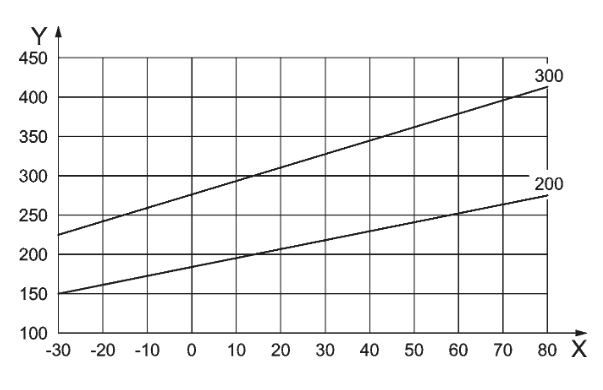Overview.
Protecting the core of modern society – power, data, connectivity and even the irreplaceable with IG-100 fire protection systems.
Nitrogen is an inert gas with excellent extinguishing properties. It is harmless to the environment and safe for people. They extinguish a fire by reducing the oxygen volume concentration in the protected area – to a level at which the fire can no longer burn. Depending on the risk of fire and national guidelines, IG-100 inert gas extinguishing systems are designed as people-safe systems.
IG-100 is also favourable for the room integrity testing aspect of a fixed extinguishing system. Due to its density being lighter than that of air, the retention times of the agent inside an enclosure after a discharge can be greatly extended.
Trade Names.
Inertech IG100, Sinorix IG100, Proinert IG100
Chemical Composition.
IG‑100 is a colourless, odourless, electrically non‑conductive gas with a density approximately the same as that of air. It is an inert gas consisting of 100% Nitrogen.
Gas Specification.
The gas specification is usually confirmed with a certificate of conformity (COC) from the manufacturer. It’s also important to ensure each specification is maintained during the 10-year testing and a new COC is provided confirming each requirement below by your supplier for the new re-filled or re-tested agent.
Extinguishant IG-100 shall comply with the specification shown below:
| Component | Argon |
|---|---|
| Purity | 99.6 % by volume, min. |
| Moisture | 50 parts per million by mass, max. |
| Oxygen | 0.1 % by volume, max. |
Physical Properties.
| Property | Units | Value |
|---|---|---|
| Molecular mass | n/a | 28.02 |
| Boiling point at 1,013 bar (absolute) | °C | -195.8 |
| Freezing point | °C | -210.0 |
| Critical temperature | °C | - |
| Critical pressure | bar | - |
| Critical volume | cm3/mol | - |
| Critical density | kg/m3 | - |
| Vapour pressure 20 °C | bar abs | - |
| Liquid density 20 °C | g/ml | - |
| Saturated vapour density 20 °C | kg/m3 | - |
| Specific volume of superheated vapour at 1,013 bar and 20 °C | m3/kg | 0.858 |
Design Concentrations.
| Standard | Class A | Higher Hazard Class A / Class C | Class B |
|---|---|---|---|
| (BS) EN 15004 | 40.3% | 45.2% | 47.6% |
| NFPA 2001 | 37.2% | 41.9% | 41.9% (n-heptane) |
| APSAD | 40.3% | 41.5% | Subject to hazard |
| ISO 14520 | 40.3% | 41.5% | 43.7% |
| LPCB | 38.9% | 43.2% | 46.0% |
| FM 5600 | 37.1% | 41.7% | 40.5% |
| UL 2127 | 37.3% | 41.9% | 40.5% |
Loael, Noael & Minimum Safety Precautions.
The below is based on the requirements of EN 15004 which is the most common design standard in the UK and other European areas.
| Property | Value |
|---|---|
| No observed adverse effect level (NOAEL) | 43.0% |
| Lowest observed adverse effect level (LOAEL) | 52.0% |
| Concentration | Time delay device* | Automatic / Manual Switch** | Lock-off device*** |
|---|---|---|---|
| Up to and including the NOAEL | Required | Not Required | Not Required |
| Above the NOAEL and up to the LOAEL | Required | Required | Not Required |
| LOAEL and above | Required | Required | Not Required |
* Time delays are usually integrated within the main gas extinguishing panel to allow a 30 second delay before the system discharges. Hold off buttons are also usually located adjacent the exits of the enclosure.
** Automatic / Manual switches are usually integrated into the main gas extinguishing panel located at the entrance of the protected area.
*** Lock-Off devices are usually manual isolation valves installed within the pipework and again located at the entrance of the protected area.
IG-100 Quantity Calculation.
Typically, gaseous extinguishing systems are used for protecting electronic equipment in data rooms or similar, we have therefore prepared a quick calculation to help understand and estimate the quantity IG-55 agent required in your enclosure. The factor provided below is also based on a design temperature of 20°C and an altitude of 0, changes in either will have a small effect on the agent quantity
Design Concentration = 45.2% (Higher Hazard Class A)
Flooding Factor = 0.7008
Volume of enclosure in M³ x Flooding Factor = Quantity required in KG
[Example assuming room volume of 150m³]
150 x 0.7008 = 105.120kg
For a calculation spreadsheet in excel format or for quantity calculations outside of these parameters, please contact us directly at
hello@mepfire.com.
Typical Cylinder Fill Weights, Sizes, Pressures & Quantity Calculator.
Inert gas cylinders come in a range of sizes however the below is reflective of the most common sizes and pressures and corresponding fill weights for reference.
| Pressure | 67 Litres | 80 Litres | 140 Litres |
|---|---|---|---|
| 200 bar | 15.15kg | 17.95kg | 31.42kg |
| 300 bar | - | 24.74kg | 43.29kg |
By using the quantity calculation above, and the maximum fill of each cylinder above, you can work out how many cylinders are typically required for your protected area.
Environmental Considerations.
Extinguishant IG‑100 is an inert gas and has zero GWP and zero ODP.
Temperature Vs Pressure Graphics
Temperature graphs are useful for verifying the pressure or your cylinders and whether they need replacing in line with the recommendations of BS EN 15004 which advises:
- Non-liquefied gases: for inert gas agents, pressure is an indication of agent quantity. If a container shows a loss of agent quantity or a loss of pressure (adjusted for temperature) of more than 5 %, it shall be refilled or replaced.

Pressure vs. temperature for IG-100 pressurised to 200 and 300 bar at 15 °C
